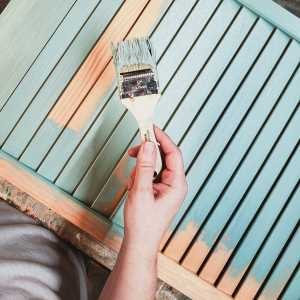 This blog post is part of the Fancypants Sew-Along. You can catch up on all of the sew-along posts here. You can learn more about Fancypants or get your copy of the tutorial here.
This blog post is part of the Fancypants Sew-Along. You can catch up on all of the sew-along posts here. You can learn more about Fancypants or get your copy of the tutorial here.
To be notified when there are new posts in this series, sign up for the Fancypants Sew-Along mailing list:
[wysija_form id=”6″]
When I introduced my new pattern last week, I mentioned briefly that idea of a sew-along. Well, let’s do this thing! Whether you want a pair of super summery sleep shorts, or luxurious down-to-your-ankles lounge pants, you will get something out of this series.
The key to choosing fabric is to understand your needs. Do you want something lightweight and breathable for the summer? Are you thinking ahead to cozy Autumnal pj’s? Do you like novelty prints? Are you all about repurposing vintage materials?
For the purposes of this sew-along, I am only going to discuss woven materials. I have no practical experience sewing with knits, and so I can’t say with any authority how a knit fabric would be with this pattern (although, I really don’t see any reason why it would not work).
Types of fabric
Light, airy, perfect for summer:
- Cotton voile fabric
- Cotton lawn fabric
- Double gauze cotton fabric
- Vintage sheets, lightweight 100% cotton, preferably
Heavier, for the cooler months:
- Designer quilting cottons
- Flannel fabric
- Vintage sheets, heavy 100% cotton, or lighter weight synthetic blends
There is so much room for personalization in all of these options! Whether you like dainty florals, stripes, big bold flowery prints, or fun novelty designs, you can find something that is “you.”
If you have a fabric store or a thrift shop nearby, I recommend a visit there so you can feel the fabric in person and see if it drapes the way you would like it to. As a general rule, the lighter fabrics have more drape and “flowiness” to them, while the heavier fabrics can be stiffer. It’s just a general rule, though. There are always exceptions.
If you don’t have a good local retailer, each of the fabric types up there links to an online source.
How much to buy
If you fall in love with a vintage sheet in a thrift shop, you’re set. You can make several pairs with just that one sheet.
If you are buying fabric by the yard, you can approach it one of two ways:
- Order 3 yards of fabric, knowing you will have some leftovers.
- Take a few measurements and calculate what you will need.
Let’s address that second option. I will be going into detail about measuring yourself tomorrow, so if you’re not in a hurry to buy your fabric right this very minute, you might want to wait for that post before you proceed.
For those of you forging ahead, you will need four measurements to make these pjs, three of which will be necessary for estimating fabric yardage: hips, thigh, crotch, and inseam.
Measure yourself, and head on over to the Fancypants Calculator. Make a note of the values you are given for F, BF, and BB.
Now, there are two ways to lay out your pattern pieces: side-by-side, and top-to-bottom. For most people, using standard cotton fabric, side-by-side will not be an option, due to the width of the fabric. Still, let’s do a few calculations to figure it out.
Take BF + BB and multiply that number by 2. That is how wide your fabric must be in order to place your pattern pieces side-by-side.
Here’s an example using my results:
BF = 12.75, BB = 15.25
BF+BB = 28
28 x 2 = 56
I would need 56″-wide fabric in order to place my pattern pieces side-by-side.
Let’s assume that I am actually purchasing fabric this wide. How many yards will I need?
This is where the F measurement comes in.
Take F+3 and divide it by 36 to get the number of yards.
Using my own example again:
F=42
42+3=45
45÷36=1.25
I would need exactly 1 and 1/4 yards of 56-inch wide fabric. This leaves no room for cutting errors, so I would probably round up to 1 and 1/2 or maybe even 2 yards, depending on the price of the fabric.
Now, what if my desired fabric is too narrow, and I must place my fabric pieces top-to-bottom?
Again we use F, but the formula is slightly different: (F+3) x 2 ÷ 36
Using my own measurements again:
F=42
42+3=45
45×2=90
90÷36=2.5
So, with a fabric narrower than 56 inches, we would need exactly 2 and 1/2 yards. Again, if I could afford it, I’d probably round up to 3 just to be safe.
Keep in mind, we are only talking about pants here. If you are thinking you might like to make a pajama top to go with the pants, you’ll need extra material. How much depends on what pattern you use for the top, but you’d probably be safe with 2 extra yards, particularly if your shirt will be sleeveless, or you are particularly thin. For best results, check the shirt pattern’s specification.
Now it’s time for you to go out and find the perfect fabric for your Fancypants! Next time, I’ll show you how to get accurate measurements of your body. Your measurements are the key to making a custom pattern that fits you!
Please note that some of the links above are affiliate links. The usual disclaimers apply.






























[…] ← Previous […]
[…] this point, we’ve talked about choosing your fabric, taking your measurements, and drawing your […]